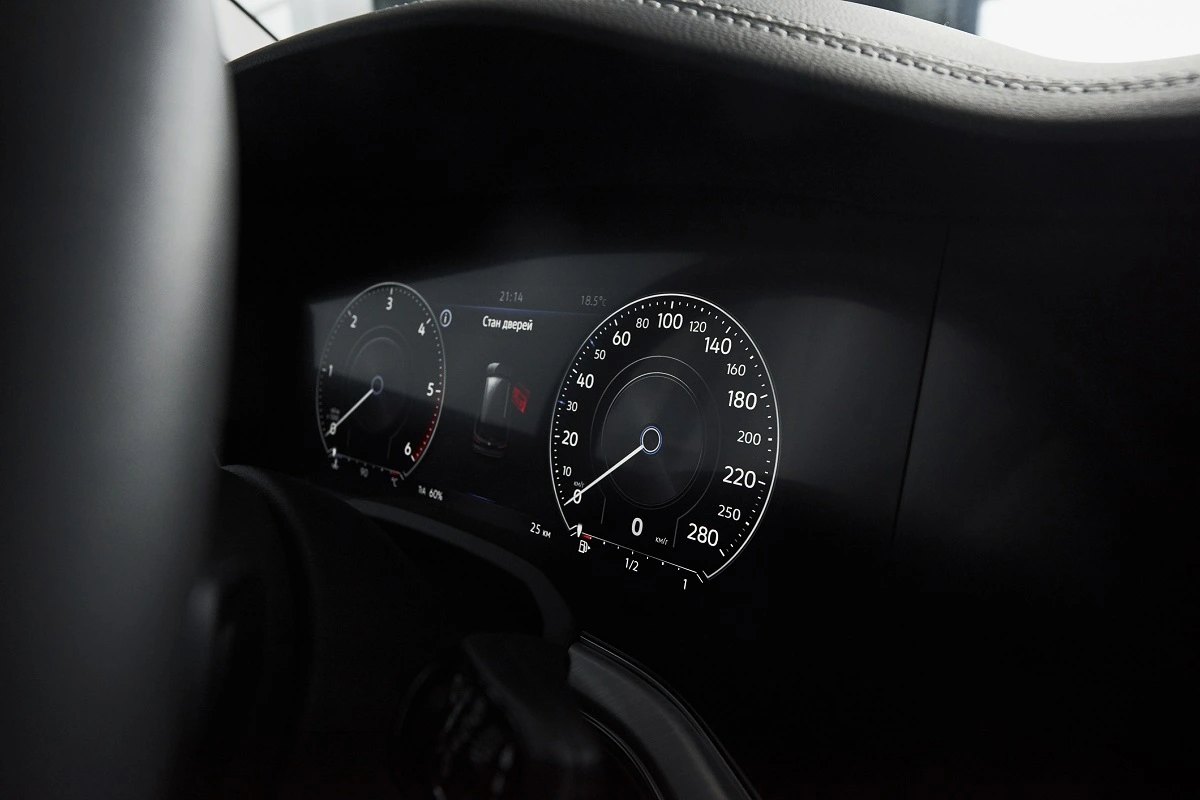The function of a speed sensor is to measure how fast things are spinning in your vehicle. Whether it’s a car, plane, tractor, train, or tank, speed sensors are vital for all types of vehicles. It is a main component that assists three essential parts of your car: the speedometer, the transmission, and the computer system. However, if a speed sensor malfunctions or displays Code p0500, it can disrupt the functioning of the automatic gearbox, resulting in peculiar behavior from your car. Let’s now examine the seven signs that indicate a faulty speed sensor.
Signs of Faulty Speed Sensor Symptoms
One of the common symptoms you can notice about bad VSS is when the gearbox starts acting weird, just like how you act in front of your crush. Okay, joking aside, you can notice it when the gearbox changes very slowly. Or it feels like it’s putting up a fight, or it shows proper signs of resistance.
1- Inconsistent Readings
When your speedometer starts giving inconsistent readings, it’s a clear sign that there might be a problem with the speed sensor. Inconsistent readings mean that it could be showing the wrong speed, either too high or too low, or it might just randomly jump around.
The main culprit behind these inconsistent readings is usually a faulty speed sensor. This could be caused by a malfunctioning sensor, wiring issues, or even debris obstructing the sensor. If you’re experiencing erratic readings, it’s best to inspect your speed sensor closely. If you’re unable to troubleshoot the issue, it’s recommended to consult a professional mechanic.
2- Gear Shifting Trouble
The speed sensor plays the main part in telling the transmission how fast the car moves. This helps it determine when to change gears. So if your car has a faulty speed sensor, it might give you some signs, like gears shifting too soon or too late.
This can surely affect your comfort while driving; sometimes, the car might resist shifting gears altogether. This trouble can be caused by two problems One is a transmission issue, and the other can be a faulty speed sensor. However, the chances of a faulty VSS are likely to cause this problem. So if you observe these symptoms while driving, then resolve the issue of a bad speed sensor instantly.
3- Imbalance Car speed
If your car has a faulty speed sensor, it can affect the cruise control system of your vehicle. This sensor assists the system in keeping the car at a balanced pace.
Due to other malfunctions in the speed sensor, it can start giving wrong data too. Therefore, you might have to struggle to keep the speed steady. This problem can be troublesome during long journeys like road trips or when you are driving on the highway.
4- More fuel consumption
A faulty speed sensor can also have an effect on the fuel consumption of your car. When a sensor provides the wrong reading, it can make our car consume more fuel. The car’s computer system seeks help from a speed sensor to control things like when the engine fires and how much fuel it requires.
If you notice your car is consuming more fuel without driving any farther, it can be because of a faulty speed sensor.
5- Check Engine Light
The speed sensor plays an important role in multiple parts of your vehicle. Another sign you can notice of a faulty sensor is when it sends the wrong signals. With the wrong signals, it can turn on the engine light. When you observe the check engine light on your dashboard, it could be due to a bad speed sensor. The basic function of the check engine light is to tell if there is an issue with your vehicle. So figure out the issue and make use of the check engine light works only when needed.
6- Anti-lock Braking System
When the speed sensor of your car is in bad condition, it can also mess with how the traction control and Anti-lock Braking System (ABS) operate. These safety systems count on the speed sensor to learn how fast the car is moving. If you have a faulty speed sensor, it can directly affect the work of ABS, which could lead to risks.
You can notice warning lights for the traction control or ABS on your dashboard, or you can also observe that these systems don’t operate like they normally do. You can easily observe these signs when driving on slippery roads or when you require a sudden break. Therefore, to avoid any risks, if you observe these faulty speed sensor symptoms, get your car to a professional mechanic for maintenance.
7- Delayed Acceleration
When pressing the gas pedal, if you feel jerks or resistance, it can be due to a bad speed sensor. Because the speed sensor acts as an essential component in how the engine works. Harsh or delayed acceleration can make your driving uncomfortable, so if you notice this sign, you better check it out to avoid any inconvenience.
Conclusions
A faulty speed sensor can affect several components of your car. The function of a VSS is to give important speed-related information to multiple systems within the vehicle, such as the engine control unit, transmission speed sensor, and ABS brakes. If these systems stop working properly, they can lead to serious issues like inconsistent speedometer readings, and erratic shifting of gears. Therefore, take immediate action if you notice any of the above-listed signs of a faulty speed sensor.
FAQs
How to Test a Speed Sensor?
If the speedometer of your car doesn’t operate properly or it is showing glitches in car speed, then it might be due to a faulty speed sensor. You can utilize a multimeter to test a speed sensor to see if it’s working properly or showing proper readings.
- First, disconnect and then remove the vehicle speed sensor from your device to test it.
- After that, link it to a multimeter and set it up to look through alternating current (AC).
- Now connect VSS to the power drill to
Then, connect the VSS to a power drill to imitate the rotation of your car’s transmission.




